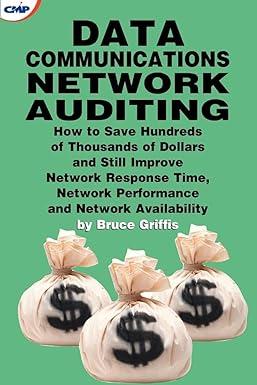Answered step by step
Verified Expert Solution
Question
1 Approved Answer
Homework #2: Accounting for Income Taxes Business Analysts, Inc., has determined its pretax financial income to be $50.000 for 20x5 and $85,000 for 20X6, its



Homework #2: Accounting for Income Taxes Business Analysts, Inc., has determined its pretax financial income to be $50.000 for 20x5 and $85,000 for 20X6, its first two years of operations. Temporary differences are as follows: 20X5 (1) An installment sale for $15,000 is included in financial income but will not be included in taxable income until 20X6 when it will be collected. (2) Revenue received in advance of $7,000 will not be included in financial income until it is earned in 20X8 but is taxable in 20X5. 20X6 (3) Assets purchased in 20X6 are being written off for income tax purposes on an accelerated basis, resulting in an excess of write-off for income tax purposes over financial statement depreciation by $30,000. That amount will reverse over the period 20X7 to 20X9 (4) A litigation loss, recognized in financial income in 20X6, will not be deductible for income tax purposes until the litigation is complete, which is expected in 20X9. The amount is $12,000. In 20X5, the income tax rate enacted for 20X5 and all future years is 34%. During 20X6 new rates were enacted that increased the percentages for 20X6 and future years to 40%. The company ends its reporting year on December 31. There are no permanent differences between pretax financial and taxable income. REQUIRED: (a) Compare the amount of taxable income for 20X5 and 20X6, beginning with pretax financial income and adjusting for temporary differences. Assume that the 20X5 installment sale was collected in 20X6. (b) Prepare an analysis of cumulative temporary differences and deferred taxes to support the year-end income tax accrual for 20X5, assuming that you know only the information that would be available at the end of 20X5 (i.e., you are not aware of actual events pertaining to 20x6 because those events have not yet occurred). Prepare the income tax accrual at December 31, 20X5, using the information in your analysis. (c) Repeat (b) for 20X6, incorporating the additional information that is now available. (d) Prepare in comparative columns the elements of the income statement and balance sheet that would appear in the 20X5 and 20X6 financial statements relative to income taxes. Homework #2: Solution 1. Compute tax due this vear: CURRENT TAX EXPENSE (la) Convert accounting income to taxable income 20X5 Accounting income 50,000 20X6 85,000 42,000 82,000 Taxable income Tax rate Income Tax payable (1b) Journal entry for tax due this year 20X5 20X6 110 2. Interperiod allocation (2a) Compute ending balance of DEFERRED TAX PAYABLE (ASSET): current vs. noncurrent Current taxable (deductible) amount Future taxable (deductible) Deferred tax payable (asset) X5 X6 Installment sales Unearned revenue Depreciation exp. Litigation loss Total Tax rate Balance of Deferred tax payable (asset) Deferred Tax Expense Deferred Tax Payable (Asset) BB: 0 BB 20X5 20X5 EB 20X6: 20X6 EB: Journal entries for DEFERRED TAX EXPENSE: 20X5 20X6 3. Financial Statement Presentation Balance Sheet Income Tax payable Deferred Tax Payable (Asset) 2085 2086 20X5 20X6 Income Statement Income before tax Taxes: Current tax expense Deferred tax expense Net income
Step by Step Solution
There are 3 Steps involved in it
Step: 1

Get Instant Access to Expert-Tailored Solutions
See step-by-step solutions with expert insights and AI powered tools for academic success
Step: 2

Step: 3

Ace Your Homework with AI
Get the answers you need in no time with our AI-driven, step-by-step assistance
Get Started


